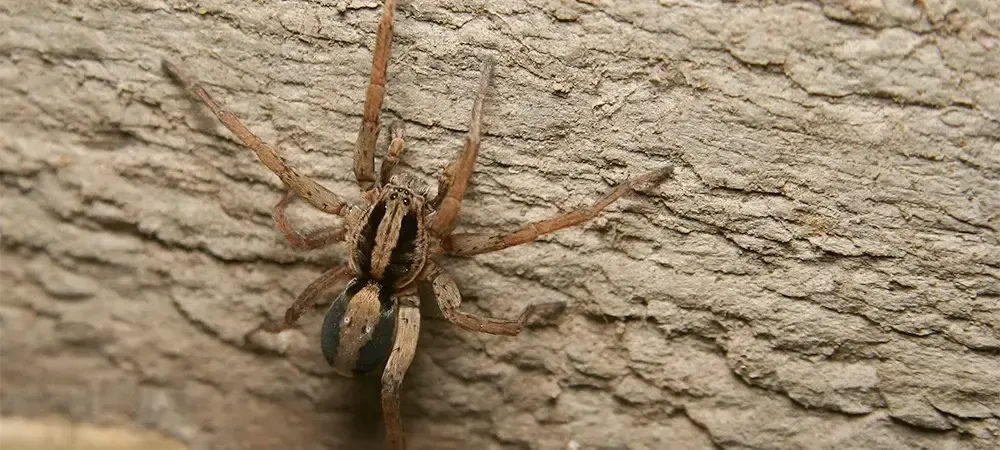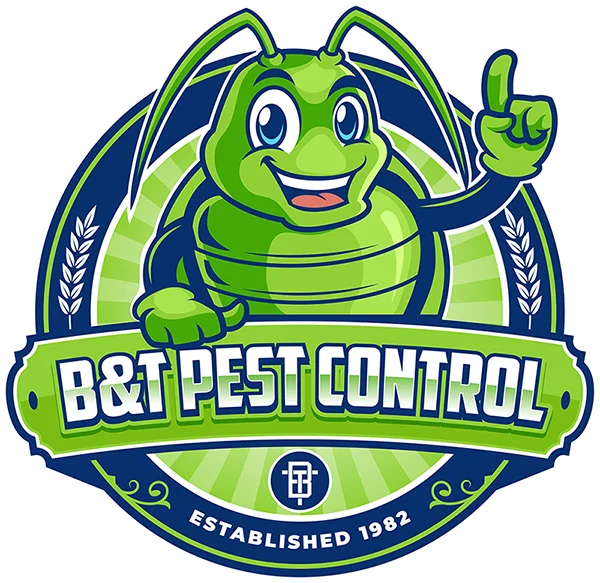Wolf Spiders in North Carolina: What You Need to Know

If you’re a homeowner in North Carolina, chances are you’ve encountered your fair share of creepy crawlers. One of the most common and startling arachnids you may see scurrying across your garage floor or hiding in your garden is the wolf spider. While their size and speed can be alarming, understanding their habits and role in the ecosystem can help you manage their presence around your home with confidence.
What Are Wolf Spiders?
Wolf spiders (family Lycosidae) are large, robust spiders known for their excellent hunting skills. Unlike many spiders that spin webs to catch prey, wolf spiders are active hunters, chasing down insects on foot. They have excellent vision (by spider standards) with eight eyes arranged in three rows—two prominent eyes in the middle give them an unmistakable appearance.
In North Carolina, the most common species include:
- Carolina wolf spider (Hogna carolinensis) – the largest wolf spider species in North America and the state spider of South Carolina.
- Rabid wolf spider (Rabidosa rabida) – known for its speed and striped appearance.
What Does a Wolf Spider Look Like?
Wolf spiders can look intimidating, especially due to their size and hairy bodies, but knowing what to look for can help you identify them more easily:
- Size: Adults range from about ½ inch to over 1½ inches long, not including their legs.
- Color: They are generally brown, gray, or black with subtle patterns or stripes. The Rabid wolf spider has noticeable yellow or cream stripes on its body and legs.
- Body Shape: Stocky, with a large head and thorax (combined into a structure called the cephalothorax) and a rounded abdomen.
- Eyes: One of their most distinctive features—eight eyes arranged in three rows. The middle row has two large eyes that reflect light at night, making them easier to spot with a flashlight.
- Hair: Their bodies and legs are often covered in fine hairs, which gives them a fuzzy appearance.
Females are often larger than males, and you might spot one carrying an egg sac or even spiderlings on her back—a behavior unique to wolf spiders.
Are Wolf Spiders Dangerous?
The short answer is no, not to humans or pets. While wolf spiders can bite if provoked, their venom is not medically significant. A bite might feel like a bee sting and could cause mild redness or swelling. In most cases, bites don’t require medical attention unless there’s an allergic reaction or secondary infection.
Where You’ll Find Wolf Spiders in NC
Wolf spiders are incredibly adaptable and can be found throughout the state—from the Appalachian Mountains to the Piedmont and coastal plains. In urban and rural areas alike, you’ll commonly find them:
- In leaf litter and mulch beds
- Along foundations and siding
- In basements, garages, and crawlspaces
- Hiding under rocks, logs, or yard debris
They are especially visible in late summer and early fall, when mature spiders are more actively searching for mates or shelter from changing weather.
Benefits of Having Wolf Spiders Around
Believe it or not, having a few wolf spiders around can actually be helpful, as wolf spiders are natural pest controllers. Their diet includes:
- Cockroaches
- Crickets
- Ants
- Beetles
- Other spiders
By keeping insect populations in check, they can reduce the number of more problematic pests around your home.
How to Keep Wolf Spiders Out of Your Home
If you’d prefer to keep wolf spiders outside where they belong, here are some practical tips tailored for North Carolina homes:
1. Seal Entry Points
Inspect your home for cracks, gaps, and torn screens—especially around doors, windows, and the foundation. In NC’s humid climate, caulking and weather stripping may wear down faster, so regular maintenance is key.
2. Clear Yard Debris
Woodpiles, leaf litter, mulch beds, and tall grass near your foundation make perfect hiding spots. Keep firewood stacked away from your house and maintain a clean yard to minimize spider-friendly habitats.
3. Manage Moisture
Wolf spiders are drawn to damp environments. Make sure crawlspaces are well-ventilated, and fix any leaks or drainage issues promptly. Consider installing a vapor barrier if you have a dirt crawl space—a common feature in many NC homes. Learn more about how to keep your crawl space dry.
4. Control Insects Around Your Home
Since wolf spiders hunt insects, one of the best ways to discourage them is to reduce the food supply. Regular pest control treatments around your home’s foundation and entry points help eliminate the small bugs that the spiders are hunting for. Learn more about how to keep insects out of your house.
5. Install Door Sweeps and Window Screens
Make sure all exterior doors are fitted with tight door sweeps and that window screens are intact and properly sealed. This adds an extra layer of protection, especially in rural or wooded areas of North Carolina where spiders are more common.
Check out our blog on how to avoid spider infestations.
When to Call a Professional – B&T Pest Control Can Help
While a few spiders in the garage might not be a concern, repeated sightings inside your home, especially larger wolf spiders, can indicate a bigger issue. That's where B&T Pest Control comes in.
As a locally owned and operated pest control company servicing eastern NC since 1982, we understand the unique pest pressures of the Carolinas. Our team is experienced in dealing with wolf spiders and the insects that attract them.
Here’s how we can help:
- Thorough Home Inspection: We identify potential entry points, nesting sites, and signs of underlying insect infestations.
- Targeted Perimeter Treatments: We apply professional-grade products safely around your home’s exterior and entry points to deter spiders and the bugs they feed on.
- Crawlspace and Basement Focus: These are common spider hotspots in NC homes. We can treat and monitor these areas to keep them pest-free. We also offer Crawl Space Moisture Control.
- Ongoing Protection Plans: Our year-round pest control plans are designed to protect your home from seasonal threats, including spiders, roaches, ants, and more.
We pride ourselves on honest, effective service that’s tailored to your home—not a one-size-fits-all solution. If you’re seeing wolf spiders in or around your home, don’t wait—contact our exterminators at B&T Pest Control today and let us take care of the problem for you.
FAQ: Wolf Spiders in North Carolina
Are Wolf Spiders Dangerous to Pets?
For most dogs and cats, wolf spiders are not dangerous. Bites are rare and usually no more harmful than a bee sting. Some pets may try to play with or eat a spider, which can cause:
- Minor oral irritation
- Occasional vomiting or drooling (in sensitive animals)
If your pet is showing prolonged symptoms or if you suspect a bite near the eyes or mouth, it’s wise to call your veterinarian. But in general, there’s no serious risk to pets from wolf spiders in NC.
Are Wolf Spiders Poisonous?
Technically, wolf spiders are venomous, like most spiders—they use venom to immobilize their prey. But for humans and pets, this venom is not considered medically significant. So, while the word “poisonous” might sound scary, it doesn’t apply in the way many people think.
Their bites are more of a nuisance than a danger, and most people will only experience mild, localized symptoms if bitten.
What Do Wolf Spider Bites Look Like?
Wolf spider bites are relatively rare and typically occur only if the spider feels cornered or threatened. If bitten, you might see:
- A small red bump or welt
- Slight swelling around the site
- Occasional itching or tenderness
Unlike bites from venomous spiders like the black widow or brown recluse (which are also found in NC), wolf spider bites usually do not cause necrosis or spreading tissue damage. However, if the area worsens or shows signs of infection (pus, increasing pain, streaks), seek medical attention.
What Do Wolf Spider Nests Look Like?
Unlike web-building spiders, wolf spiders do not build traditional nests or webs. Instead, they create burrows or ground-level retreats where they hide during the day and rest between hunting trips. These “nests” may be:
- Small tunnel-like holes in the ground, sometimes lined with silk for structure
- Found under rocks, leaf piles, logs, or landscape timbers
- Occasionally created in mulch beds or around foundations, especially if the soil is soft or sandy
In yards across North Carolina, these burrows can be hard to spot unless you know what you’re looking for. Some may have a bit of silk webbing at the entrance or be slightly covered with grass, debris, or soil.
Indoors, wolf spiders may shelter in dark, undisturbed areas like cardboard boxes, storage bins, behind appliances, or in corners of basements and garages—but they don't make a "nest" in the traditional sense.
What Do Wolf Spiders Eat?
Wolf spiders are carnivorous hunters. Their diet primarily consists of:
- Insects like crickets, ants, beetles, and cockroaches
- Other spiders and small arthropods
Because they don’t use webs to trap prey, wolf spiders rely on ambushing or chasing down their meals—often at night. This active hunting behavior helps reduce pest populations naturally.
Where Do Wolf Spiders Live?
Wolf spiders are ground dwellers that do not build webs. Instead, they create burrows or use natural debris for cover. In North Carolina, you’ll find them:
- In forests, fields, and suburban lawns
- Inside woodpiles, leaf litter, and under stones
- Around basements, crawlspaces, and foundations
Indoors, they prefer cool, dark, and undisturbed areas like garages, storage closets, and behind boxes or appliances.
Will a Wolf Spider Jump on Me?
It’s a common fear, but wolf spiders aren’t aggressive toward humans and don’t actively jump on people. However, because they are fast and reactive, they can sometimes appear to leap or dart quickly when startled. This may look like they’re jumping at you, but in reality:
- They're trying to flee or escape, not attack
- Their movement is more of a sudden sprint than a deliberate pounce
- Some species can lunge forward to catch prey, but this behavior is not aimed at humans
If a wolf spider feels cornered, it may raise its front legs as a warning display—but actual bites are very rare and only occur when the spider feels trapped and has no way out.
